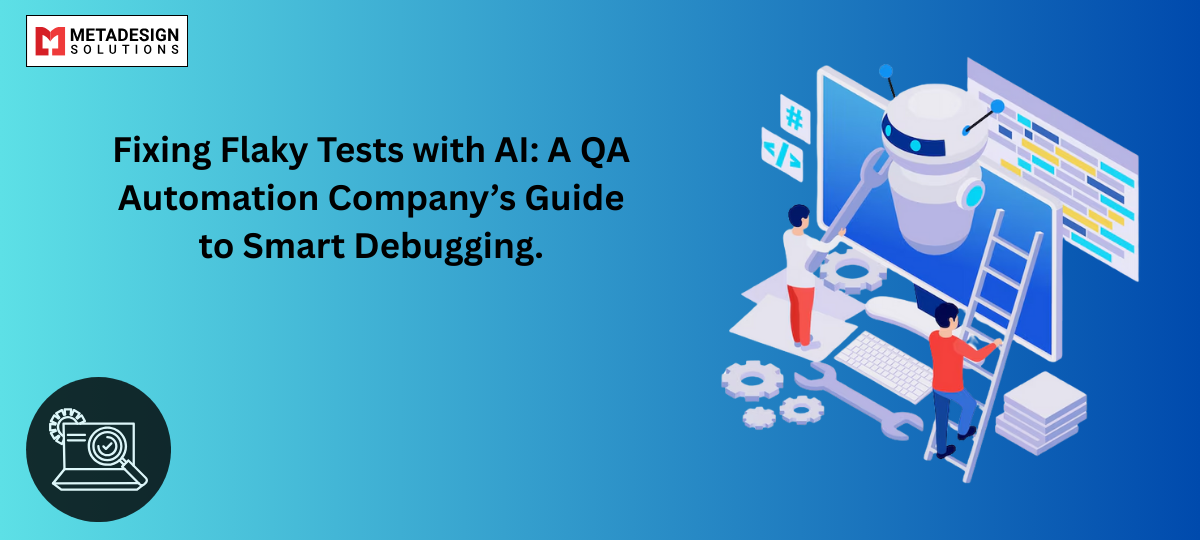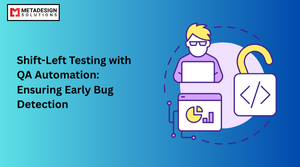1. Introduction: The Challenge of Flaky Tests in QA Automation
Flaky tests are a common and frustrating issue in automated testing. These tests, which produce inconsistent results—passing sometimes and failing at others—pose a significant challenge to quality assurance (QA) teams. In a world where rapid development cycles are crucial for delivering high-quality software, flaky tests can severely disrupt automated testing workflows.
Defining Flaky Tests
A flaky test is one that exhibits non-deterministic behavior: it may pass on one run and fail on another, despite no changes to the underlying code. This unpredictability makes flaky tests problematic for automated testing, as they introduce uncertainty into the test results.
Why Flaky Tests Are a Problem for QA Automation
Automated testing is meant to provide consistent and reliable feedback, but flaky tests undermine this principle. If flaky tests are left unchecked, they lead to false positives (tests that pass but shouldn’t) or false negatives (tests that fail but shouldn’t). This can waste valuable time and resources and erode the trust QA teams place in automated testing.
Furthermore, flaky tests can cause delays in the software development lifecycle (SDLC), as teams may waste time investigating the cause of test failures that are, in fact, not due to actual bugs. For teams relying on QA software testing services, these inconsistencies can significantly impact efficiency and overall confidence in automated test coverage.
Tired of Flaky Tests Messing Up Your CI/CD Pipeline?
Let’s chat about AI-driven solutions to stabilize your QA process. Book a meeting now!
2. What Causes Flaky Tests?
Flaky tests are often caused by a combination of factors. Understanding these root causes is crucial in order to fix them effectively.
Common Reasons for Flaky Tests in Automation
- External Dependencies: Flaky tests often arise when tests depend on external systems such as APIs, databases, or services that may not be stable or available at all times.
- Timing Issues: Automated tests can sometimes fail due to timing problems, such as waiting for a resource to become available or waiting for a process to complete before moving on to the next step. These timing-related issues can cause tests to fail intermittently.
- Environment Dependencies: Changes in the environment, such as a shift in server load, updates to the operating system, or network instability, can cause tests to fail unexpectedly. These factors may not be directly related to the application under test but can still lead to inconsistent test results.
The Role of the Environment, Timing Issues, and Dependencies
Many flaky tests are tied to environmental factors or resource availability. For example, a test that interacts with an external database may fail if the database is down or unreachable. Similarly, if the test execution is dependent on a time-based action, it might fail if the timing is off by just a few milliseconds.
These environmental or timing issues can be difficult to predict, and manual debugging often leads to wasted time and effort. This is where AI can play a significant role in identifying these patterns and offering solutions to mitigate them.
3. The Role of AI in Debugging Flaky Tests
AI software development solutions can significantly improve how teams handle flaky tests by providing smart, data-driven solutions that help pinpoint the causes of inconsistency. Here’s how AI can help:
How AI Can Help in Identifying the Root Causes of Flaky Tests
AI tools can analyze historical test data to identify patterns in test failures. By looking at large sets of data from previous test executions, AI can determine if certain tests are prone to failure under specific conditions, such as certain network speeds, server loads, or time of day.
Predictive Capabilities and Pattern Recognition in AI Debugging Tools
AI-powered debugging tools utilize machine learning algorithms to predict which tests are most likely to fail. These tools also use pattern recognition to identify common factors that lead to flaky tests, such as certain combinations of test steps or environmental conditions. By understanding these patterns, AI can provide suggestions for fixing or avoiding flaky tests in the future.
4. AI-Powered Tools for Detecting and Fixing Flaky Tests
Several AI tools are designed specifically for detecting and fixing flaky tests in automated testing frameworks. These tools leverage machine learning, data analytics, and intelligent pattern recognition to streamline the debugging process.
Overview of AI Tools Available for Flaky Test Detection
Some popular AI tools in the market include:
- Testim.io: This tool uses machine learning to automatically identify and fix flaky tests by analyzing test executions and spotting failure patterns.
- Mabl: Mabl provides AI-powered test automation that detects flaky tests, offering detailed insights into why a test might have failed.
- Applitools: Applitools uses AI to detect visual inconsistencies, which are a common source of flaky tests in UI-based applications.
How These Tools Help in Identifying Test Inconsistencies
AI-powered tools can analyze test data across multiple runs to identify whether a test is behaving inconsistently. These tools help pinpoint specific areas of failure by analyzing factors such as the test environment, network conditions, and UI rendering performance. Once inconsistencies are identified, these tools can recommend fixes, such as adjusting timeouts or optimizing test code for better performance.
5. Understanding Test Patterns and Anomalies with AI
AI’s power lies in its ability to detect patterns in large volumes of data. In the context of flaky tests, AI can analyze test runs and detect patterns that are invisible to human testers.
Leveraging AI to Spot Test Execution Patterns
AI-driven tools can track test execution times, resource usage, and other variables to uncover patterns of failure. For example, if a test consistently fails when executed during peak server load times, AI can identify this relationship and suggest optimizations to the test scripts to account for the load variations.
Using AI to Predict Test Failures Based on Historical Data
By analyzing historical test data, AI can also predict the likelihood of future test failures. AI algorithms can use this data to flag high-risk tests before they are executed, providing an early warning system for potential issues.
6. AI-Based Solutions to Prevent Flaky Tests
AI can not only help detect flaky tests but also prevent them from occurring in the first place. Through smart debugging and proactive measures, AI can ensure more reliable automated testing.
Automation of Root Cause Analysis
AI can automate the root cause analysis of flaky tests by continuously monitoring test executions and analyzing the underlying causes of failure. This helps eliminate manual debugging efforts and speeds up the process of identifying test inconsistencies.
Proactive Measures AI Can Implement to Avoid Flaky Tests
AI tools can help automate several steps to prevent flaky tests:
- Test stabilization: AI can suggest modifications to test scripts to make them more stable and less susceptible to environmental issues.
- Retry mechanisms: AI can introduce retry mechanisms where necessary, ensuring that tests are re-executed automatically if they fail under certain conditions, reducing the impact of intermittent failures.
7. Best Practices for Implementing AI in Flaky Test Debugging
Integrating AI into your QA automation process can significantly improve the accuracy and efficiency of debugging flaky tests. However, it’s crucial to follow best practices to ensure a smooth and effective adoption of AI-driven solutions.
Steps to Integrate AI into Existing QA Workflows
- Start with Data Collection: AI tools require a significant amount of historical test data to train their machine learning models. Gather comprehensive data from your previous test runs, including test logs, execution times, resource consumption, and environmental conditions.
- Choose the Right AI Tool: Different AI tools offer varying features. Choose the one that best fits your organization’s specific needs. Look for features like machine learning-based failure prediction, integration with your CI/CD pipeline, and support for the testing frameworks you use.
- Pilot the AI Tool: Before fully integrating AI into your entire testing pipeline, start by piloting the tool with a small set of tests. Monitor the tool’s performance and assess how accurately it identifies flaky tests and their root causes.
- Automate AI-Based Fixes: Once the AI tool has identified flaky tests and their root causes, implement automated solutions where possible. For instance, automatically adjusting timeouts, retrying failed tests, or altering test scripts based on AI recommendations can help stabilize tests.
- Monitor and Iterate: AI-driven debugging is not a one-time process. You’ll need to continuously monitor the AI tool’s performance and iterate on the test strategy. As AI models improve, refine your test suite and ensure that your automated tests remain stable.
Overcoming Challenges When Adopting AI for Debugging
- Data Quality: One of the main challenges when implementing AI is ensuring the quality of your test data. If the data used for training the AI models is incomplete, inconsistent, or biased, the results will be unreliable. Ensure that your test data is comprehensive and free from noise to get the best outcomes from AI debugging tools.
- Cost and Complexity: Implementing AI solutions for debugging flaky tests may require an upfront investment in terms of both time and money. It’s essential to evaluate the cost-benefit ratio and consider AI as a long-term solution to reduce the time and resources spent on manual debugging.
- Learning Curve: AI-powered tools may have a steep learning curve for QA teams that are not familiar with AI concepts. Provide adequate training and documentation to ensure that your QA team can make the most of the new tools and workflows.
8. Real-World Case Studies: AI in Action for Fixing Flaky Tests
To fully appreciate the impact AI can have on fixing flaky tests, let’s look at some real-world examples where companies successfully implemented AI-based debugging solutions.
Success Stories of Companies Using AI to Improve Test Reliability
- Company A: E-Commerce Platform
A leading e-commerce platform faced frequent flaky tests due to external dependencies, such as API calls to payment gateways. After integrating an AI-powered test automation tool, the company was able to predict failures related to API downtime. The AI system helped identify and handle these failures proactively, reducing test instability by 40%. - Company B: Mobile App Development Firm
A mobile app development company struggled with flaky UI tests due to varying network speeds and device configurations. By using an AI-based solution, the company was able to analyze patterns related to different devices and network conditions. The AI system recommended script adjustments, resulting in a 30% reduction in flaky test occurrences.
How AI-Based Debugging Helped Achieve Higher Test Stability
Both companies achieved higher test stability through AI’s ability to predict and prevent flaky tests. By automating the detection of environmental dependencies, timing issues, and network conditions, AI tools provided much-needed insights into the specific causes of test failures. The companies not only fixed flaky tests but also optimized their overall QA processes, leading to faster development cycles and more reliable product releases.
9. The Future of AI in QA: Evolving from Flaky Test Fixing to Smart Testing
AI is rapidly evolving in the field of QA automation, and it’s expected that its role will continue to grow in sophistication. In the future, AI-driven debugging won’t just stop at fixing flaky tests—it will expand to smarter testing strategies that improve the entire testing lifecycle.
What the Future Holds for AI in QA Automation
AI’s future in QA will involve increased integration with Continuous Integration and Continuous Deployment (CI/CD) pipelines. As AI tools become more advanced, they will seamlessly work within these pipelines to offer real-time test predictions and fixes.
- Self-Healing Tests: In the coming years, AI could automate the process of fixing broken tests without human intervention. By analyzing failures and automatically adjusting the test scripts, AI could create a truly self-healing test suite.
- Contextual Test Execution: AI will likely develop the ability to understand the context in which tests are executed, such as the exact version of the code, the type of environment, and the test dependencies. This contextual awareness will allow AI tools to fine-tune tests based on specific conditions, making them even more stable and efficient.
Next-Generation AI Features for Smarter Debugging and More Reliable Tests
AI is expected to introduce next-gen features, including:
- Automated Test Optimization: AI will evolve to not only fix flaky tests but also to optimize the test suite by prioritizing the most relevant tests based on historical failure data. This will reduce the testing cycle time while maintaining quality.
- Self-Adjusting Test Scripts: AI could automatically generate or adjust test scripts based on real-time changes in the application’s codebase, ensuring that the tests stay up to date with minimal human intervention.
- Improved Failure Prediction: AI will become even better at predicting the likelihood of test failures by analyzing patterns in both past failures and the overall test execution environment. By doing so, AI will help teams focus on high-risk tests before they are run, preventing potential failures.
10. Conclusion
Flaky tests have long been a thorn in the side of automated QA teams, but with AI-powered debugging tools, these issues can be significantly reduced or eliminated. AI provides smart solutions for identifying, fixing, and preventing flaky tests by analyzing historical data, detecting failure patterns, and predicting test instability.
As the QA industry continues to embrace AI in automation, the potential for smarter, more reliable tests grows exponentially. AI will not only help debug flaky tests but also offer predictive and proactive measures to ensure that test execution remains stable and consistent. By adopting AI-based debugging tools, QA teams can focus on delivering higher-quality software at an accelerated pace—free from the frustrations of flaky tests.
Embrace AI in your testing process and stay ahead in 2025 and beyond, where test automation will be faster, smarter, and more reliable than ever before.
Related Hashtags:
#QAAutomation #FlakyTests #AIDebugging #TestAutomation #SoftwareTesting #DevOps #CICD #SmartTesting #BugSquashers #AIinTesting



